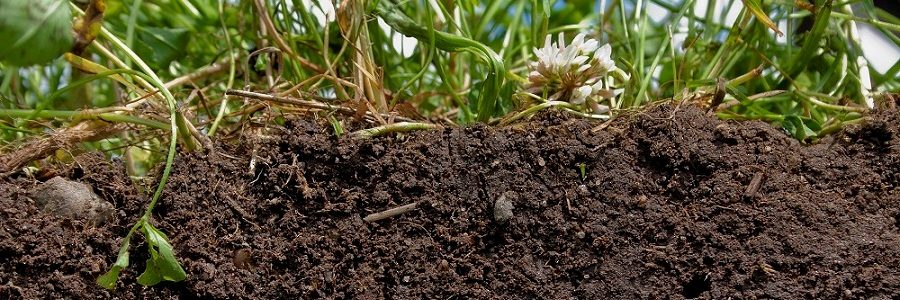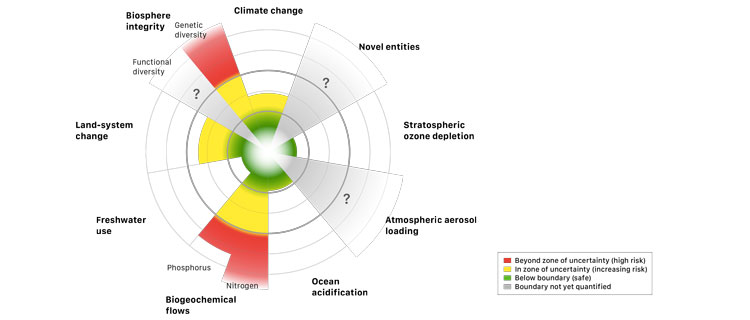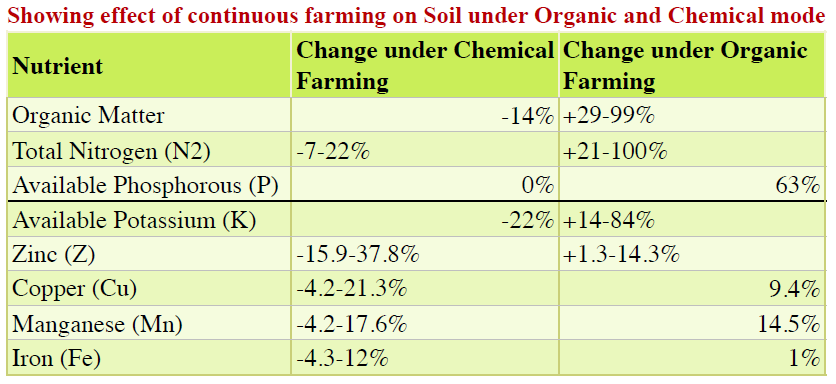
By Dr Vandana Shiva – Jivad – The Vandana Shiva Blog, 25 December 2018 | Source
The IPCC has warned that we have twelve years to limit climate change catastrophe.
A decade ago in Soil Not Oil, I had shown that 40-50% of the emissions of the Green House Gases is contributed by the industrial food systems;
- agriculture production 11-15%;
- land use change & deforestation ( e.g soya in the Amazon) 15-18%;
- processing, transport, packaging, retail 15-20%;
- waste 2-4%.
In 2009 at the Copenhagen Summit Navdanya released its Manifesto on Climate Change and the Future of Food Security.
In agricultural production the main contributors to Green House Gases are carbon dioxide, nitrous oxide from synthetic nitrogen fertilisers and methane from factory farming and food waste.
The synthetic nitrogen fertilisers on which industrial agriculture is based are produced from fossil fuels. One kg of nitrogen fertilisers uses the equivalent of 2 ltr s of diesel (Soil Not Oil). In addition to the carbon dioxide side emitted in the manufacturing process of synthetic fertilisers, they also emit nitrous oxide, a Green House Gas 300 times more destabilising for the climate than carbon dioxide. According the Stockholm Resilience Centre, of the nine planetary boundaries it is the nitrogen planetary boundary that has been most dangerously transgressed (Navdanya, Seeds of Hope, Seeds of Resilience).

Illustration: Steffen et al. 2015 | Source
Any discussion on food, agriculture and climate change needs to be based on the diversity and complexity which are the basis of Living Soils, Living Food, Living Economies which are the basis of a stable climate.
Climate change is a result of our ignorance of the complexity of nature’s ecological processes and externalisation of the pollution of the land and atmosphere, the destruction of biodiversity, that goes hand in hand with fossil fuel based nonrenewable economies, including fossil fuel based industrial agriculture. Continuing to ignore the diversity of our soils, our crops, our ecosystems and reducing all food to a hand full of globally traded industrial agriculture commodities, and reducing all dimensions of climate change to carbon alone, is promoting market fundamentalism and carbon reductionism.
An example of such fundamentalism and reductionism is a recent paper that has been hugely promoted in the media Assessing the Efficiency of Changes in Land Uses for Mitigating Climate Change, Timothy D. Searchinger, Stefan Wirsenius, Tim Beringer& Patrice Dumas. While the paper itself is an example of reducing the economy to the market and Green House Gases to carbon, and says nothing about organic farming, all the promotion of the paper in the media exaggerates the claims being made. An example is https://www.sciencealert.com/new-study-shows-how-organic-farming-takes-its-toll-on-the-environment.
The media that is falsely using an extremely reductionist analysis of climate change then extrapolates from it to make the false claim that organic farming is worse for the climate than industrial agriculture.This is based on multiple false assumptions.
The first false assumptions the reduction of the complexity of climate change as a process destabilising the Earth’s sea regulatory systems to a totally illusionary market construct called the carbon opportunity cost (COC) which makes no sense in an ecological paradigm but assumes the market is all there is.
This new fictitious metric of COC adds to the existing distortions of another fictitious metric called ‘yield per acre’ which only measures monoculture commodities and leaves out the biodiversity of outputs and ecological functions and services. Two fictitious metrics do not give us the reality of how natural systems including climate systems, and food & agriculture systems work.
Based on these fictions the paper and the media hype around it, assumes that it is ecological agriculture food production that respects nature’s laws while producing more nutrition per acre is destroying forests when it is infact, industrial agriculture for commodities which is expanding its limitless appetite to destroy pristine rainforests. The destruction of the Amazon is not because of the food needs of indigenous people but because of GMO Soybean monocultures most of it go for biofuel and animal feed, aggravating the hunger of 1 billion people in the world.
The expansion of industrial monocultures accounts for 18% emissions from deforestation and land conversion .It is scientifically inaccurate to link these deforestation to small farms and agroecolgical systems.
- 90% of corn and soya go to animal feed and biofuel. Industrial food systems are destroying the climate without feeding people.
- 80% of the food we eat comes from small farms according to the FAO.
And food is not a handful of industrial commodities. We used to eat 10,000 species of plants. Industrial food systems have reduced this to 12 commodities destroying both the planet’s health and people’s health.
The paper being used to mislead the public and policy makers about the relationships between the food systems and climate change is based on the false metric of «yield per acre» of monoculture commodities. Real world problems of ecological collapse and the hunger crises cannot be addressed by metrics that neither reflect nature’s productivity or the productivity of small farms.
Agriculture should provide food and nourishment for people , not nutritionally empty toxic commodities which are predominanty industrial raw material , not food. As Navdanya’s work shows over 3 decades , in terms of Nutrition Per Acre Biodiverse Organic Farms outperform chemical monoculture farms. So more nutrition is produced on less land , and there is no need for cutting forests . If all farming in India was biodiverse organic, we could feed two India’s with good, balanced diets, addressing hunger and malnutrition. (Navdanya’s Health Per Acre report plus the new book Andre Leu and I have written on «Biodiversity, Agroecology and Regenerative Organic Agriculture «).
There is no science in the paper that is being hyped in the media. Only false assumptions based on market fundamentalism and carbon reductionism.
Living Soils and Living Food are expressions and embodiments of Living Biodiversity. Living carbon, in contrast to dead fossil carbon, is an important element of the living world of nature. We would have a dead planet if the Earth was ‘decarbonised’ of its green mantle.
Living Earth is Living Carbon. But it is more than carbon. It is biodiversity in soils and plants based on diverse elements being continuously recycled through the circular economy of nature.
Navdanya’s 20 year study on regenerative organic systems comparing organic vs chemical soils shows how carbon and nitrogen in organic soils has increased . This is how the broken carbon and nitrogen cycle is fixed by organic farming. On the other hand, chemical farming has led to decline in carbon , nitrogen and other trace elements and micronutrients vital for the health of soils and health of people.

Source: Navdanya, Seeds of Hope, Seeds of Resilience.
The pseudoeconomics and pseudoscience of the Nature paper makes for good PR for the food and agriculture industry. But it falls short of understanding and communicating ecological science which is central to finding real climate solutions.
It is time to return the “economy” to its roots Oikos, which is our home, the Earth. It is time to remember that economy is a subset of ecology, the science of understanding the laws of the earth and the laws of nature on which agroecology, regenerative organic farming and healthy and sustainable food systems are based on.
